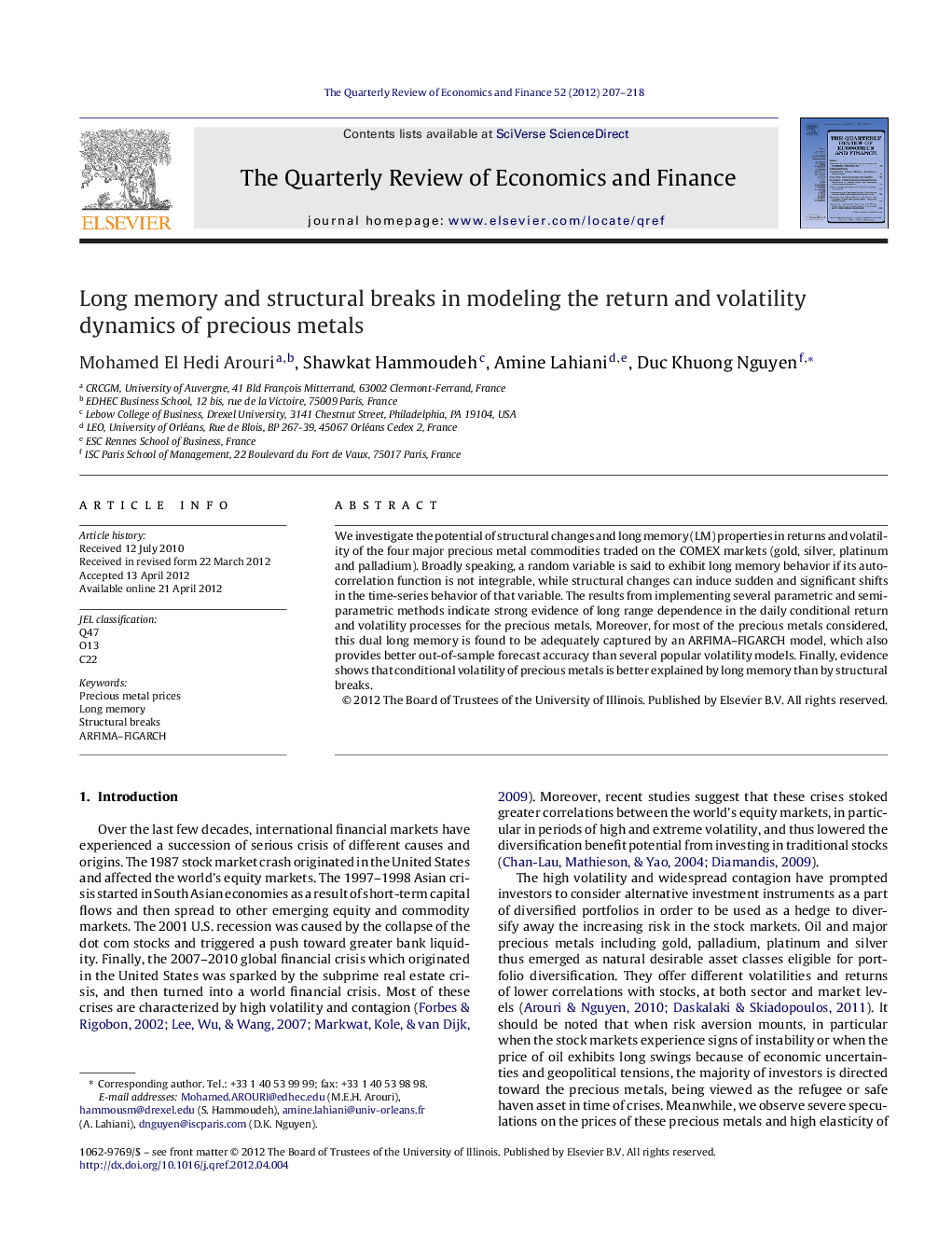| Article ID | Journal | Published Year | Pages | File Type |
|---|---|---|---|---|
| 980395 | The Quarterly Review of Economics and Finance | 2012 | 12 Pages |
We investigate the potential of structural changes and long memory (LM) properties in returns and volatility of the four major precious metal commodities traded on the COMEX markets (gold, silver, platinum and palladium). Broadly speaking, a random variable is said to exhibit long memory behavior if its autocorrelation function is not integrable, while structural changes can induce sudden and significant shifts in the time-series behavior of that variable. The results from implementing several parametric and semiparametric methods indicate strong evidence of long range dependence in the daily conditional return and volatility processes for the precious metals. Moreover, for most of the precious metals considered, this dual long memory is found to be adequately captured by an ARFIMA–FIGARCH model, which also provides better out-of-sample forecast accuracy than several popular volatility models. Finally, evidence shows that conditional volatility of precious metals is better explained by long memory than by structural breaks.
► The potential of structural change and long memory properties in returns and volatility of the four major precious metal commodities is investigated. ► We find strong evidence of long range dependence in the daily conditional return and volatility processes. ► For most of the precious metals, the dual long memory can be adequately captured by an ARFIMA–FIGARCH model. ► Conditional volatility of precious metals is better explained by long memory than by structural breaks. ► The ARFIMA–FIGARCH model provides more accurate volatility forecasts than several popular volatility models.
